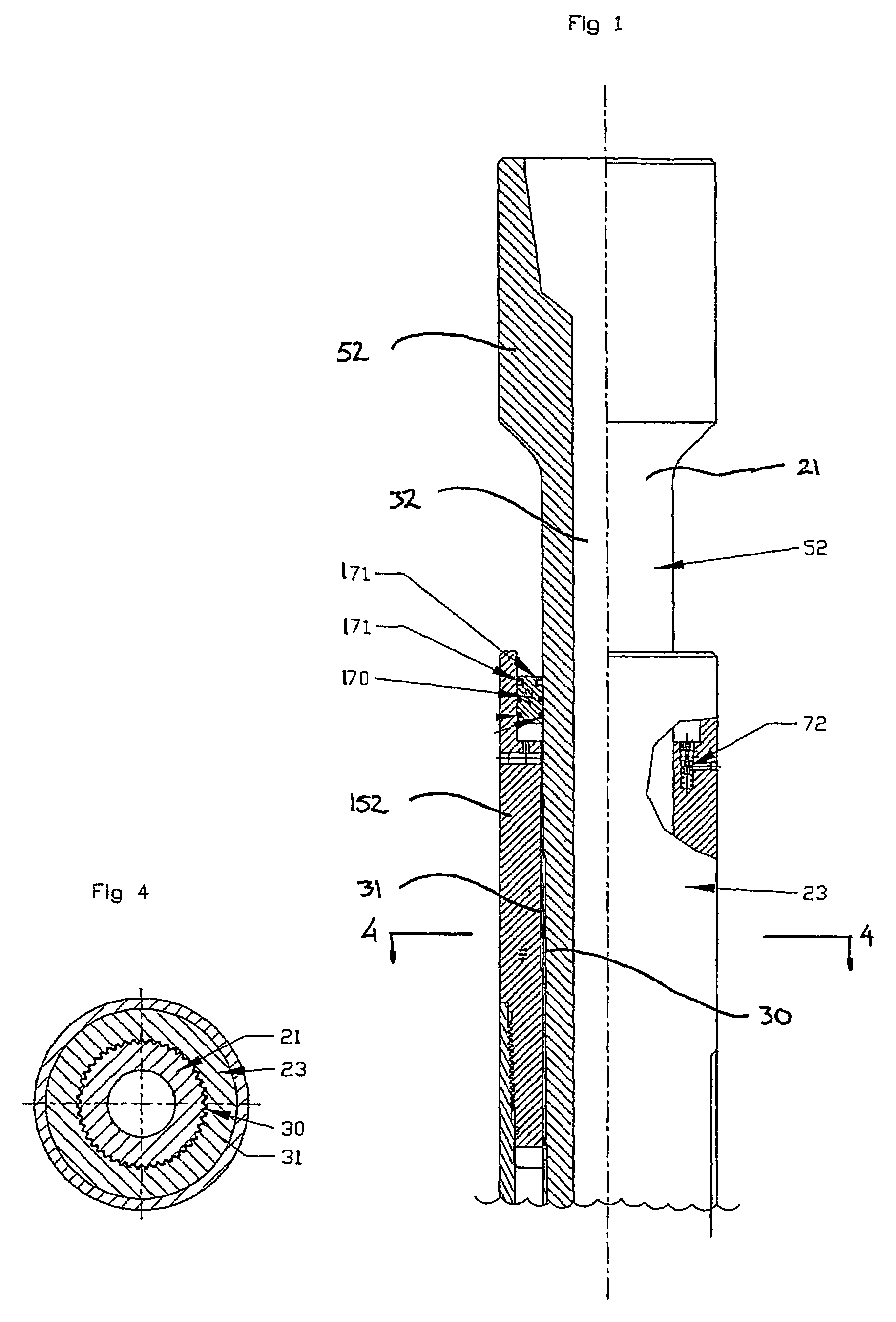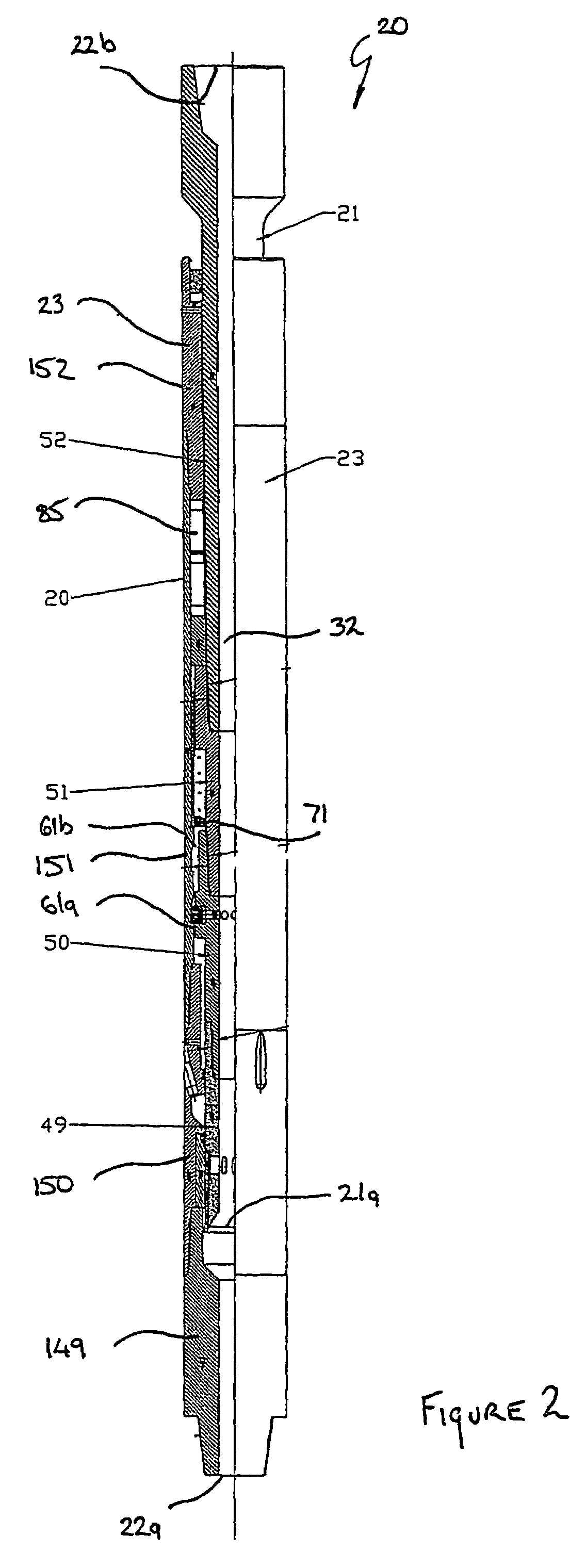Flushing device and method of flushing an annular space
a technology of flushing device and annular space, which is applied in the direction of fluid removal, wellbore/well accessories, sealing/packing, etc., can solve the problems of increasing the complexity of the network, increasing the length of the extraction activity in the oil and gas industry, and new challenges in the field of well boring, etc., to achieve the effect of increasing the reliability
- Summary
- Abstract
- Description
- Claims
- Application Information
AI Technical Summary
Benefits of technology
Problems solved by technology
Method used
Image
Examples
Embodiment Construction
[0070]Referring to FIGS. 1 to 3, the invention according to an embodiment is a flushing device 20, comprising an outlet 22a, an inlet 22b, an inner sleeve 21 and an outer sleeve 23, which cooperate to provide a fluid passage 32.
Inner Sleeve
[0071]The inner sleeve 21 comprises a first inner portion 49 located at a first end 21a of the inner sleeve 21. The first inner portion 49 is secured through threading engagement to a second inner portion 50 which is secured through threading engagement to a third inner portion 51 which in turn is secured through threading engagement to a fourth inner portion 52. The fourth inner portion 52 defines the inlet 22b of the flushing device 20, and is adapted to be releasable incorporated in the drill stem assembly.
[0072]A plurality of seals 53a are positioned at the interface between each portion 49, 50, 51, 52 so as to prevent the leakage of fluid from the passage 32, through the threaded interface between each portion and into an oil chamber 53 (whic...
PUM
 Login to View More
Login to View More Abstract
Description
Claims
Application Information
 Login to View More
Login to View More - R&D
- Intellectual Property
- Life Sciences
- Materials
- Tech Scout
- Unparalleled Data Quality
- Higher Quality Content
- 60% Fewer Hallucinations
Browse by: Latest US Patents, China's latest patents, Technical Efficacy Thesaurus, Application Domain, Technology Topic, Popular Technical Reports.
© 2025 PatSnap. All rights reserved.Legal|Privacy policy|Modern Slavery Act Transparency Statement|Sitemap|About US| Contact US: help@patsnap.com



